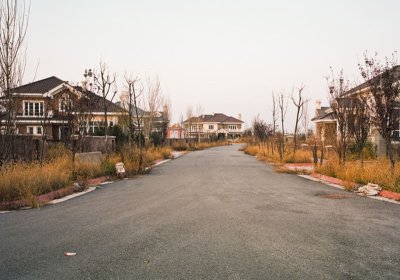When donations to political parties from property developers in NSW were prohibited by then-NSW Labor premier Nathan Rees in November 2009 the decision was not well received by significant groupings in the state Labor and Liberal parties.
The ban followed an Independent Commission Against Corruption (ICAC) inquiry into Wollongong City Council which, in 2008, found that local developers had received favourable treatment from elected councillors and staff.
John Rainford
In 1978, Deng Xiaoping, who Mao Tse Tung called a “capitalist roader”, initiated an economic reform program labelled “market socialism.”
Within two decades, China had managed to transition from a closed communist state to an open centre of dynamic capitalism with the greatest economic growth rates in human history.
After the onset of the Global Financial Crisis (GFC) in 2008, China immediately injected $US586 billion into its economy in classical Keynesian counter-cyclical stimulus spending. The next year, it began the largest fixed investment stimulus program the world has ever seen.
The use of the drug ice in Australia is said to be at “epidemic'' levels. There is nothing new in this claim for both Australia and much of the rest of the world.
Epidemics have accompanied the use and misuse of stimulants since the late-19th century. John Rainford traces that history in the final part of this three-part series.
* * *
The rise in the use of crystal methamphetamine, or ice, shows the self-defeating mechanism of drug prohibition.
The ecological effects of the four-fold increase in global manufacturing output between 1950 and 1970 were subject to scientific analysis in an international study published in 1972.
The authors of the aptly titled Limits to Growth warned that the tripling of carbon dioxide emissions that came with this unprecedented growth would lead to ecological and economic collapse in the 21st century if overuse of resources continued.
But the essential condition for the successful functioning of capitalism is a minimum 3% compound annual growth rate — for ever.
The use of the drug ice in Australia is said to be at “epidemic'' levels. There is nothing new in this claim for both Australia and much of the rest of the world.
Epidemics have accompanied the use and misuse of stimulants since the late-19th century. John Rainford traces that history in the second of this three-part series.
* * *
On the strength of a claimed turnover of $1 billion, the Australian Financial Review reported in early February 1978: “At this sort of growth rate Nugan Hand will soon be bigger than BHP.”
But two years later, on January 27, 1980, one of the bank's two founders, Frank Nugan, was found dead near Lithgow in NSW from a gunshot wound to the head. An inquest found it was suicide. Meanwhile, the other founder of the bank, Michael Hand, was busy shredding documents, including “files identifying clients regarded as sensitive”.
The use of the drug ice in Australia is said to be at “epidemic'' levels. There is nothing new in this claim for both Australia and much of the rest of the world.
Epidemics have accompanied the use and misuse of stimulants from the late-19th century. John Rainford traces that history in this three-part series.
* * *
By the latter decades of the 19th century, mass production and an emphasis on speed had signalled the start of modernity.
The Central Intelligence Agency was set up in 1947 as the key agency for US Cold War operations. From its inception, it intervened in the trade union movement and workers' political parties throughout much of the world, including Australia.
One of the first post-World War II US policy objectives was to counter the newly-formed World Federation of Trade Unions (WFTU) to which the Australian union movement was affiliated through the ACTU.
BlueScope's October 26 announcement that the Port Kembla steelworks would be saved from closure came as an obvious relief for the workforce, who had agreed to 500 job losses to save 4500 jobs, together with a three-year pay freeze and foregone bonuses for the next 12 months.
These union concessions are reportedly worth $40 million to BlueScope. The New South Wales government agreed to defer $60 million in payroll tax payments over the next three years, and the company will save a further $100 million through “worker flexibility”.
The United Nation's Intergovernmental Panel on Climate Change estimated in 2011 that carbon dioxide emissions had to be limited to 1000 gigatons to have a two-thirds chance of keeping global warming below 2°C.
By mid-October, there were more than 100,000 fires raging in the Indonesian provinces of Sumatra and Kalimantan that had released an estimated 995 million metric tons of carbon dioxide into the atmosphere over the past four months. This is just short of 1 gigaton.
The onset of the Global Financial Crisis can be dated to July 2007, when two Bear Stearns hedge funds holding almost US$10 billion in mortgage-backed securities collapsed. That same month, bankers at Lehman Brothers paid themselves $US5.7 billion in bonuses.
Little more than a year later, Lehman Brothers filed for bankruptcy with debts of $US613 billion. It was the largest bankruptcy in history.
Enterprise bargaining is the only way that workers and their unions can legally seek wage increases. Since the system was first introduced by a federal Labor government in 1993, it has achieved its deliberate, but unstated, aim of lowering aggregate wages and increasing profits.
- Page 1
- Next page











